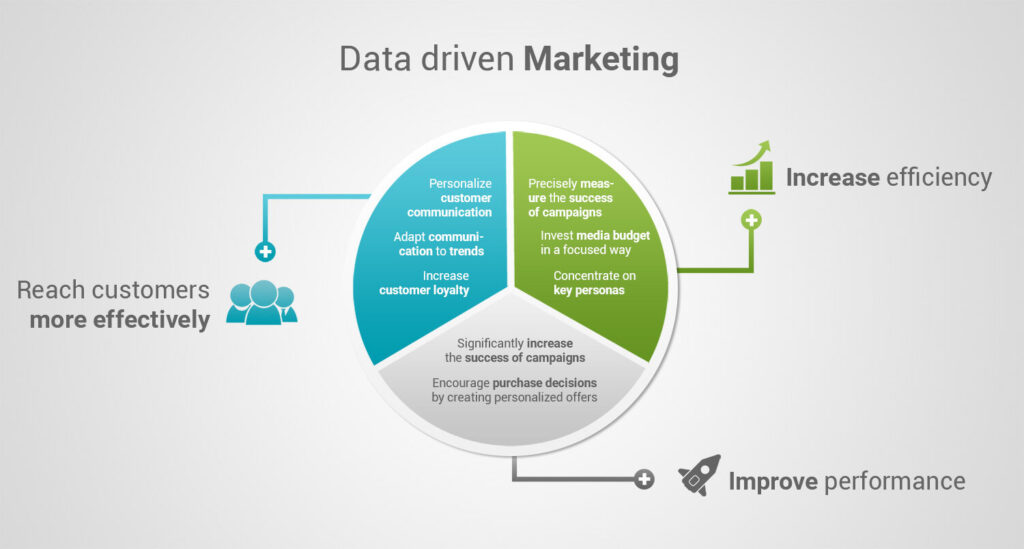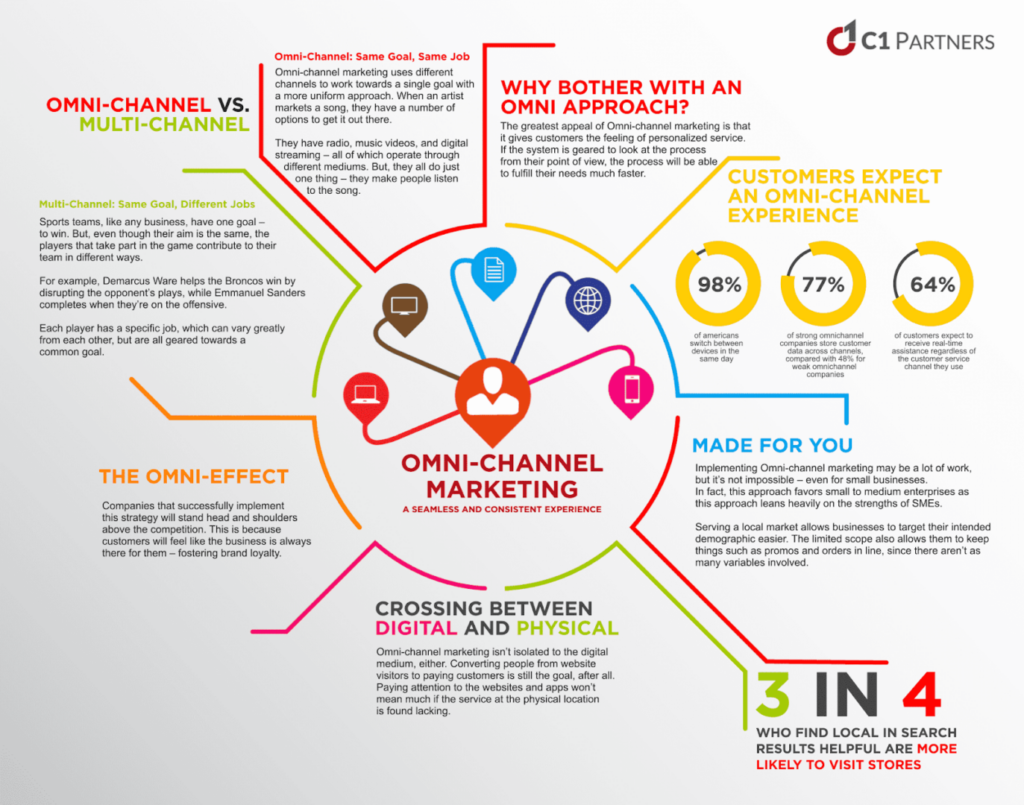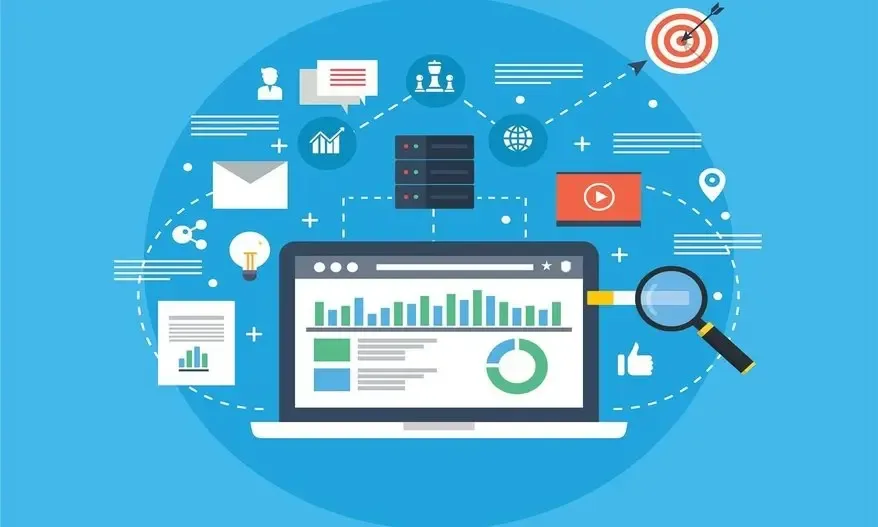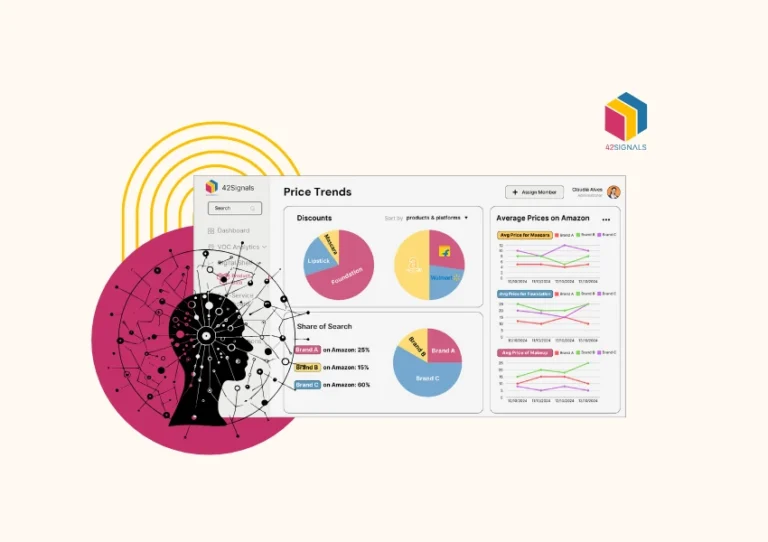Imagine you’re browsing through an online store on your smartphone, looking at sports sneakers. Later, as you scroll through your social media, you spot an ad from the same store, showcasing those sneakers on sale. That’s data-driven marketing in action: the store has used your browsing data to tailor an offer that’s hard to resist, right when you’re most likely to appreciate it.

Source: Amazon
This personalized approach isn’t just nice to have; it’s essential for eCommerce businesses aiming to cut through the digital noise. With consumers encountering countless ads daily, only the ones that resonate on a personal level manage to capture attention. Data-driven marketing empowers eCommerce sites to make their outreach efforts not only seen but also meaningful, turning casual browsers into loyal customers.

Source: Recostream
Take Netflix’s tailored content recommendations, for example. While Netflix isn’t selling physical products, the principle remains the same for eCommerce: using past behavior to predict and influence future actions. By analyzing what you’ve watched, Netflix presents shows and movies you’re more likely to enjoy, keeping you engaged and subscribed. Similarly, an eCommerce site can use your browsing and purchase history to suggest products that genuinely interest you, enhancing your shopping experience and encouraging repeat visits.
By 2024, data-driven marketing has gotten even smarter thanks to technologies like artificial intelligence (AI) and machine learning. AI can sift through data much faster than a human, spotting trends and patterns we might miss. This means businesses can quickly adapt their strategies to what their customers want right now.

Source: Search Metrics
But with great power comes great responsibility. As data-driven marketing evolves, so do privacy concerns. Customers want to know that their data is safe and that it’s being used in a way that respects their choices. That’s why there’s a big push towards marketing that not only uses data smartly but also ethically, ensuring that trust remains strong between businesses and their customers.
The Foundations of Data-Driven Marketing
Essential Types of Data

- Customer Data: For data-driven marketing, it’s necessary to have basic information like names, ages, and addresses. Not just that its also demographics, interests, and purchasing history. Understanding who your customers are is the first step in tailoring your marketing efforts to meet their needs.
- Engagement Data: This tracks how customers interact with your brand across different channels, be it social media, your website, or email campaigns. Metrics such as click-through rates, time spent on a page, and social media interactions offer insights into what catches their interest and keeps them engaged.
- Conversion Data: It’s crucial to know how all this engagement translates into actual business outcomes. Conversion data covers actions like making a purchase, signing up for a newsletter, or downloading a whitepaper. Analyzing this data helps in understanding which marketing efforts are driving tangible results.
- Behavioral Data: This goes beyond engagement for data-driven marketing and looks at how customers use your products or services, including their browsing patterns, purchase behaviors, and even how they navigate your website. Such insights can help in personalizing the customer experience and optimizing the user journey.
- Sentiment Data: Understanding how customers feel about your brand can be gleaned from customer reviews, social media comments, and customer service interactions. This type of data is invaluable for managing your brand’s reputation and addressing any potential issues before they escalate.
Tools and Technologies for Data Collection and Analysis
- Customer Relationship Management (CRM) Systems: CRMs are foundational for storing and managing customer data in data-driven marketing. They track interactions with customers across points of contact, providing a 360-degree view of the customer journey.
- Analytics Platforms: Tools like Google Analytics offer deep insights into website and app performance, engagement metrics, and conversion rates. They are essential for understanding how users interact with your digital properties.
- Data Management Platforms (DMPs): DMPs collect and analyze vast amounts of data from various sources, helping marketers target their messages more effectively across different channels.
- Artificial Intelligence and Machine Learning: These technologies are revolutionizing data analysis by predicting customer behavior, automating personalization, and optimizing marketing campaigns in real time based on data insights.
- Social Media Analytics: Platforms like Hootsuite or Sprout Social provide detailed insights into social media performance, offering a direct look into how audiences engage with content and perceive your brand on social platforms.
By leveraging these types of data through the appropriate tools and technologies, marketers can craft strategies that are not just reactive but proactive, anticipating customer needs and staying ahead of market trends.
Implementing Data-Driven Tactics in 2024
Implementing data-driven marketing tactics in 2024 involves embracing technology and strategies that recognize and cater to the individual needs and preferences of customers. Here’s how businesses are doing it:
Personalization and Customization
The essence of personalization lies in using data to tailor marketing messages and offers to suit the unique preferences of individual users.
Imagine an online boutique that remembers your style preferences and sizes, suggesting outfits that not only match your taste but also your upcoming events, thanks to your browsing habits and past purchases. This boutique uses real-time data to create a shopping experience so personalized, it feels like you have your own digital stylist. In 2024, businesses are taking personalization further by using real-time data to deliver personalized experiences, making interactions even more relevant and engaging.
Predictive Analytics
Predictive analytics involves using historical data to forecast future trends and customer behaviors. By analyzing patterns and outcomes from the past, businesses can make informed predictions about what customers might do or need in the future.
Consider an online bookstore that, knowing your love for mystery novels, sends you a curated list of upcoming releases before you even start your search. By analyzing your reading habits and preferences, this store not only keeps you engaged but also anticipates your next read, making it your go-to place for book shopping.
Omnichannel Marketing

Source: Saaslist
Omnichannel marketing takes a holistic view of the customer journey, integrating data across all channels to provide a seamless and consistent customer experience. Whether a customer interacts with a brand through social media, email, a mobile app, or in-store, the experience should be unified and continuous.
Picture a scenario where you add a pair of shoes to your cart on a mobile app, but hesitate at the last minute. Later, while browsing the web on your laptop, you see a reminder of your cart, with a 10% discount on those very shoes, encouraging you to complete the purchase. This seamless experience across devices, ensuring no lead is lost, is the hallmark of effective omnichannel marketing.
Automation and AI
Automation and artificial intelligence (AI) are streamlining marketing processes and decision-making, making it possible to handle complex data tasks with unprecedented speed and accuracy.
Envision an eCommerce platform that uses AI to optimize its email marketing campaigns, sending you offers for products you’ve been eyeing at the exact moments you’re most likely to make a purchase. This isn’t just convenient for you as a shopper; it’s incredibly efficient for the retailer, ensuring their marketing efforts have the highest impact with minimal manual effort.
Future Trends in Data-Driven Marketing
As we look towards the future of data-driven marketing, several key trends and technologies are poised to shape the landscape. These innovations offer exciting opportunities for marketers to refine their strategies and create more personalized, efficient, and respectful interactions with consumers.
- Voice and Visual Search Optimization: With the rising use of voice-activated assistants and image search technologies, optimizing for voice and visual searches will become crucial. Marketers will need to adapt their content and SEO strategies to cater to these search modalities, focusing on natural language and visual content.
- Blockchain for Transparency and Trust: Blockchain technology promises to introduce new levels of transparency and security in marketing, particularly in the area of consumer data management. By leveraging blockchain, brands can offer undeniable proof of consent and data use, building trust with their audience.
- Augmented Reality (AR) and Virtual Reality (VR): These technologies are set to redefine immersive customer experiences. From virtual try-ons to interactive 3D ads, AR and VR can significantly enhance the way brands engage with their customers, offering personalized and memorable experiences.
Conclusion
The future of data-driven marketing is rich with opportunities for innovation, personalization, and more meaningful consumer engagement. However, it also requires marketers to navigate the complexities of technology adoption, data privacy, and changing consumer behaviors. To stay competitive in 2024 and beyond, adopting a data-driven mindset is essential. This means continually exploring new technologies and trends, understanding the evolving landscape, and being willing to adapt and innovate.





